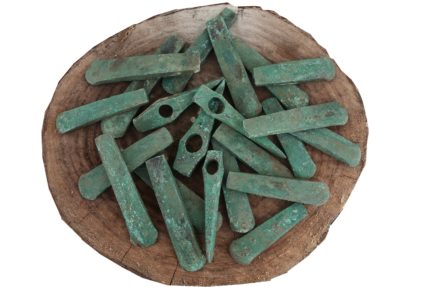A hoard of Copper Age axes and ax hammers discovered in Bulgaria is the largest ever found in Europe. The heavy copper tools were found accidentally during agricultural work near the village of Polkovnik Taslakovo in the northeastern region of Silistra in 2013. The 22 pieces — 18 flat axes and four axe hammers — were found together in one spot about three feet below the surface. The farmer, Erdoan Ismet Shaban, alerted the authorities and experts from the Ruse Regional Museum of History were dispatched to examine the hoard.
The tools are made of an alloy with a high copper content for a total weight of 25.6 pounds. They date to the late Chalcolithic, 4500-4200 B.C., a time when the site was on the periphery of the highly populated and metallurgically active settlements on the coast of the Black Sea. It’s likely that the tools in the hoard were cast in one of those places, in fact, and then traded and distributed west to central Bulgaria and other parts of the Balkan Peninsula. There are four settlement mounds near the find site, so it’s possible the hoard was connected to one of them, but there has been no archaeological field survey of the area to help determine whether there is a Chalcolithic layer that can be associated with the find.
“The discovered find is the largest [of its kind] in Europe so far. It is a testimony to the [development and sophistication] of the earliest metallurgy in human history,” the Ruse Regional Museum of History says.
“The axes bear hardly any traces that they were used which leads to the supposition that they were not meant for practical purposes but were an indicator of prestige, or were [were used as] means of exchange,” the Museum adds.
The axes and axe hammers are now on display at the Regional Museum of History in Silistra where they will be conserved and stored in proper conditions.
